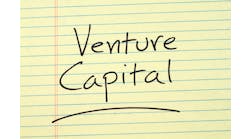Crowdfunding is something that most people probably hadn’t heard of before 2012, but now can’t avoid in 2013. It’s a trend that’s hit the entertainment industry, those in food and drink, the world of fashion, and countless other facets of life.
It’s the new-age technique of funding an off-the-ground product or idea through the common man. It’s the 2013 version of going to your local investors club and telling them that you have this great idea that can change the world…if only you could just get a few bucks to get it off the ground. It’s not even just ideas that are being financed. If you want, you can even turn to crowdfunding for child adoption.
Naturally, it’s infiltrated healthcare.
Healthcare start-up accelerator firm, Rock Health, recently released a mid-year report on venture capital (VC) investment in digital healthcare. Along with the usual insight on traditional VC funding opportunities, Rock Health mentioned that crowdfunding has become a somewhat viable option for entrepreneurs. Thus far in 2013, $4.5 million has been raised in digital health companies through crowdfunding.
There are healthcare standalones like MedStartr and HealthFundr, and additional avenues in traditional generic crowdfunding sites. Indiegogo, one of the bigger crowdfunding sites on the internet, recently announced a partnership with Health Tech Hatch, one of the health-specific crowdfunding sites.
Yet despite all of these opportunities to crowdfund in healthcare, all of you potential entrepreneurs shouldn’t just immediately go and write up a pitch and submit it to one of the above sites. Below the surface, there seems to be difficulties and potential limitations in getting your project off the ground this way.
In talking about the Health Tech Hatch/Indiegogo collaboration with GigaOM (link above), Patricia Salber, CEO of Health Tech Hatch, revealed the barriers of getting investors to fund a software idea. Salber said that funders don’t get anything tangible and may want equity (in many cases, crowdfunding entrepreneurs use rewarded with perks like early versions of a product).
There are natural exceptions to that case, such as this one on MedStartr, but thus far, it’s been the concrete that has dominated this space. That’s fine if you want to create a wearable tracking device, but for those who are trying to leverage the increasing need in the industry for clinical data that physicians can use to deliver better outcomes, crowdfunding is still very much an unanswered question.
I’m interested to see how it develops over the coming year and whether this trend will amount to anything. Will crowdfunding in health IT follow the same pattern as it has in other industries, or will it evolve uniquely? What are your thoughts? Feel free to leave comments below or respond to me on Twitter by following me at @HCI_GPerna.

